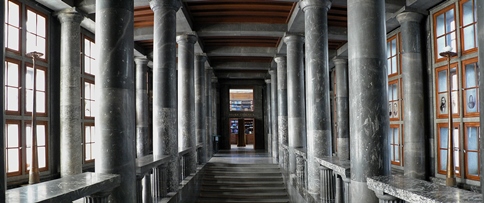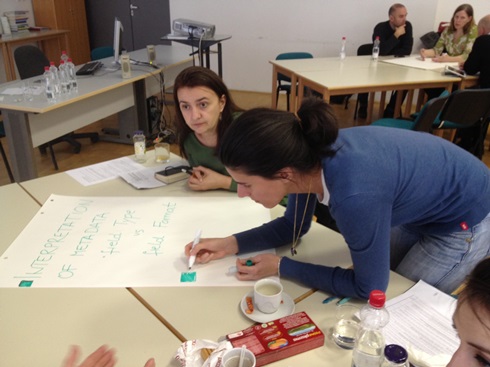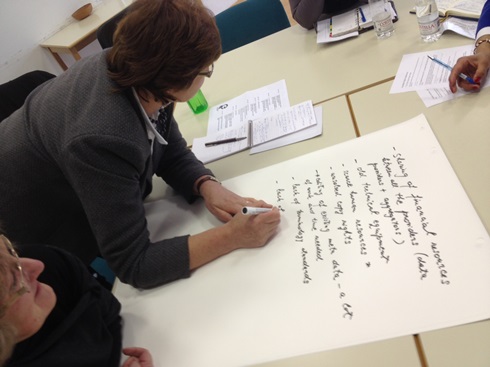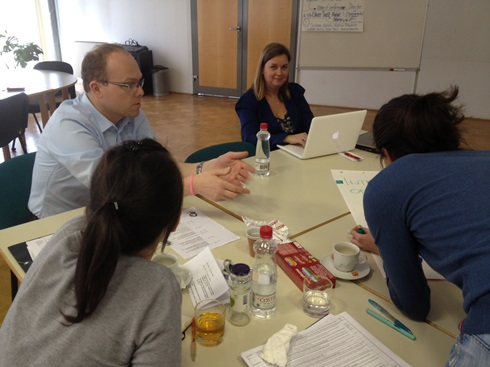Aggregation and Enlightenment in Slovenia
In the latest in our series of blogs following the progress of aggregation schemes for Europeana, we hear how our team visited Slovenia, talked masterpieces, and found enlightenment! David Smith writes...
On 21 March, the Europeana Business Development and Ingestion teams ran a workshop in conjunction with the National Library of Slovenia in the city of Ljubljana.
The National Library has been aggregating material to Europeana for many years via its Dlib.si portal. In the past year, the National eContent Aggregator was initiated as a cross-domain national aggregator.
Before the workshop, we were lucky enough to be shown around the impressive National Library building, designed by Slovenia’s most famous architect, Jože Plečnik. Through the building's imposing brass front doors, the potential reader is led up a dark, marble-pillared staircase towards the light-flooded, wooden-panelled reading room. To access collections here, you literally have to walk up towards enlightenment.

Main Entrance Staircase of the National and University Library by Jože Plečnik, 2009. Slovenian National E-content Aggregator, CC-BY-NC.
The workshop itself was held at another site on the outskirts of the city. Around 20 participants engaged in a day of discussions about Europeana and aggregation in Slovenia. After an introduction, Annette Friberg from Europeana gave a presentation on Europeana's current and future plans. This included development of Europe’s network of aggregators and some current interesting projects. Zoran Krstulović then introduced the National eContent Aggregator project including technical details regarding how the system is working. Zoran’s presentation was in Slovenian and created quite a buzz of discussion with the attendees.

Following this, I presented Europeana’s key areas of development: audiovisual material, masterpieces and the API. A common trend across all the places I have done my presentation is the reception of the audience when presented with a potential list of their country's masterpieces. The requirement for the availability of digitised masterpieces was a recommendation of the EC’s New Renaissance paper and something we have been working on for the past year. Mobilising national aggregators and other organisations to make these available is a priority area of Europeana but not without its pitfalls. The Slovenian audience was receptive to the idea, which was reassuring to us.

Francesca Morselli from the Europeana Ingestion team then presented and ran a workshop on metadata quality and rights statements. Rights statements are a key focus for Europeana in 2013 and the workshop gave us an opportunity to work through issues associated with providing accurate rights statements for content coming into the Europeana portal.
After lunch, the final workshop looked at simplifying the process of making material available via Europeana. During this workshop, we discussed the possible benefits of the work being done on the Europeana Inside project. The audience clearly saw the benefits of that project and how it could relate to their own work.

As with all workshops, the end of the day was marked with very quick goodbyes and next steps before the rush back to the airport. Throughout our time in Slovenia, we were assisted by the National Library of Slovenia, to whom we are very grateful for their hospitality and organisational support.
More blogs about aggregation:
Finland's National Digital Library Formula for Success
Working Towards a Bulgarian National Aggregator
